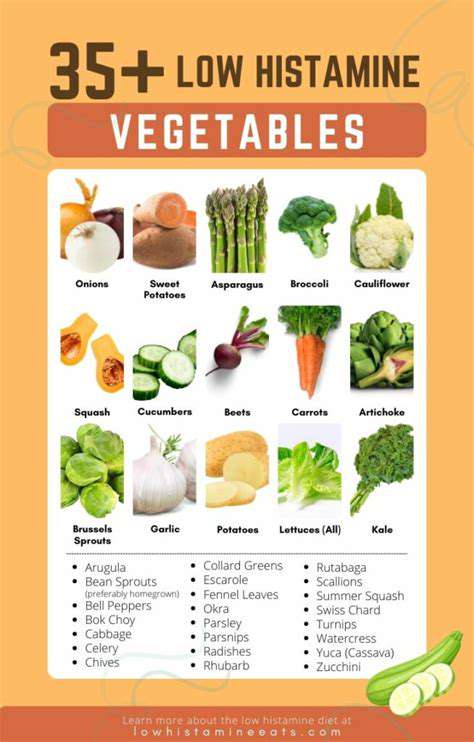Guide to a Low Histamine Diet
Managing Histamine Release and Avoiding Triggers
Understanding Histamine Release
Histamine is a naturally occurring compound in the body that plays a crucial role in various physiological processes, such as digestion, immune responses, and nerve function. However, an overproduction or release of histamine can lead to a variety of unpleasant symptoms, particularly in individuals with histamine intolerance. Understanding the triggers and mechanisms behind histamine release is essential for effectively managing its effects and following a low-histamine diet.
Various factors can influence histamine release, including stress, certain foods, and even medications. Comprehending these triggers is key to identifying potential sources of histamine overload and making informed dietary choices.
Identifying Common Histamine Triggers
Several foods are known histamine releasers or contain high levels of histamine. These include aged cheeses, fermented foods like sauerkraut and kimchi, smoked fish, and certain types of alcohol, especially red wine and aged vinegar. Recognizing these foods and understanding how they impact histamine levels is vital for managing a low-histamine diet effectively.
Beyond food, other triggers such as stress, certain medications, and even environmental factors can exacerbate histamine release. Identifying these triggers is crucial for crafting a personalized approach to managing histamine intolerance.
The Role of Diet in Managing Histamine
A crucial aspect of managing histamine levels is through dietary adjustments. A low-histamine diet focuses on avoiding foods that trigger histamine release or contain high levels of histamine. This includes limiting or eliminating processed foods, aged or fermented foods, and certain types of alcohol. This dietary approach can significantly reduce histamine exposure and alleviate related symptoms.
Carefully selecting foods with low histamine content is essential. Fruits and vegetables, lean proteins, and whole grains are generally considered low in histamine and can be incorporated into a balanced diet.
Strategies for Avoiding Histamine Triggers
Implementing strategies to avoid histamine triggers is key to managing histamine intolerance. This includes careful food labeling, reading ingredient lists, and inquiring about preparation methods. Understanding how certain foods are processed and stored can reveal potential sources of histamine. Being mindful of the ingredients in restaurant meals and restaurant preparation methods is also essential.
Developing a support system for making informed food choices, such as consulting with a registered dietitian or nutritionist, can provide valuable guidance and tailored strategies for avoiding histamine triggers.
Importance of Food Labeling and Preparation
Careful attention to food labeling and preparation methods is paramount when following a low-histamine diet. Understanding the potential histamine content of various foods and paying close attention to ingredient lists is crucial for avoiding unexpected histamine triggers. This requires awareness and diligent research to ensure that a low-histamine diet is well-executed.
Proper food storage and preparation techniques can also reduce histamine formation. Avoiding contact with oxygen, light, and moisture for certain foods can help minimize histamine buildup. Cooking methods can also influence histamine levels in foods. These strategies are crucial for successfully navigating a low-histamine diet.
Lifestyle Factors and Histamine Management
Beyond dietary adjustments, various lifestyle factors can influence histamine levels and overall well-being. Stress management techniques, such as meditation or yoga, can help regulate the body's response to histamine. Adequate sleep and hydration are also crucial for supporting a healthy immune system and reducing histamine release.
Regular exercise and maintaining a healthy weight can further contribute to overall well-being and support the body's ability to manage histamine. Considering these lifestyle factors alongside dietary changes provides a holistic approach to managing histamine intolerance.

Read more about Guide to a Low Histamine Diet
Hot Recommendations
- Traditional Foods for Day of the Dead
- Food Etiquette in Italy: Pasta Rules!
- Best Family Friendly Restaurants with Play Areas in [City]
- Review: The Best [Specific Dessert] Place in [City]
- Top Ice Cream Parlors in [City]
- Traditional Foods for Halloween
- The History of the Potato in Ireland
- Best Vegan Pizza Joints in [City] [2025]
- Best Bakeries for Sourdough Bread in [City]
- Food Culture in Argentina: Asado and Wine











